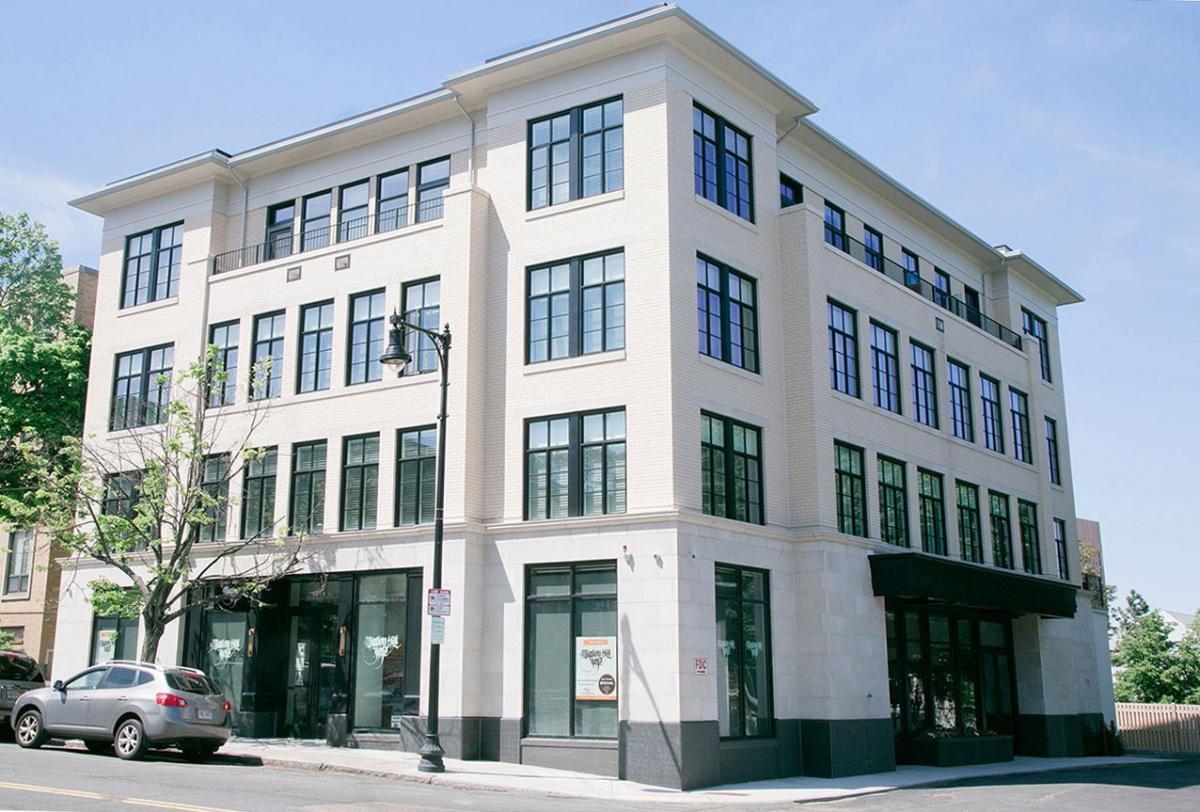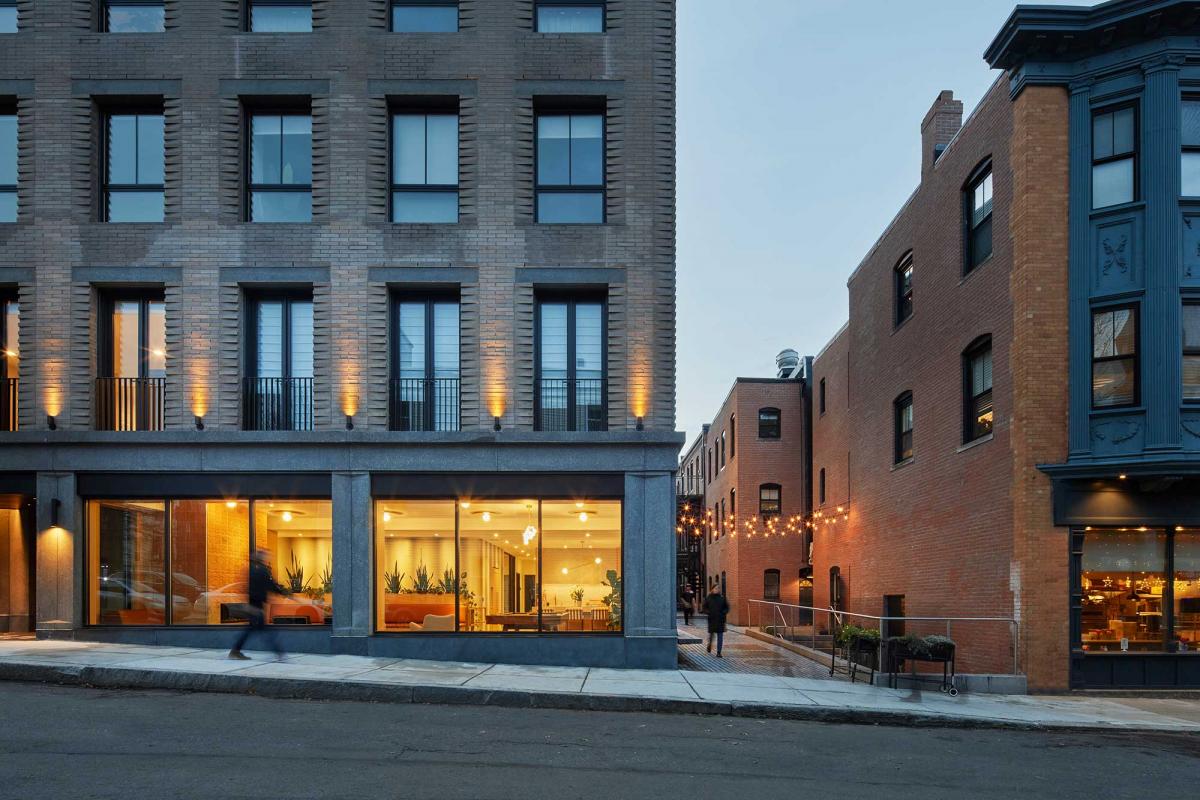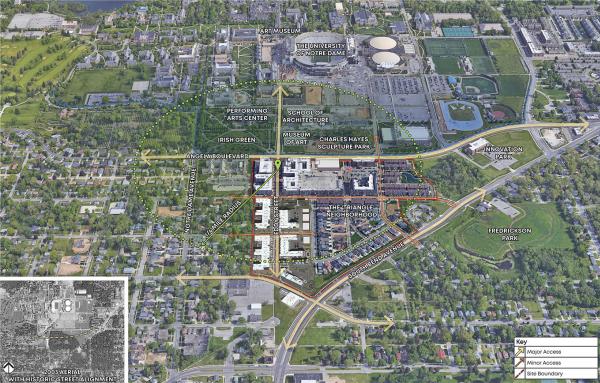
Community transformation through smaller-scale buildings
Rebuilding Tremont Street transformed a previously underdeveloped corridor in Mission Hill, Boston, with fine new architecture near the Roxbury Crossing subway station. Simple and well-executed mixed-use and residential buildings on five sites totaling two acres, built over several blocks, raise neighborhood value. The interventions are surgical and distinguished, with the texture and details to engage the pedestrian. A small, mid-block pocket park contributes to public space.
According to the design and development team, the project stands out in its divergence from large, block-sized infill projects prevalent in other neighborhoods. Instead, it favors smaller-scaled buildings on scattered sites, allowing for a community-focused development.
“The transformation of Tremont Street is remarkable,” explains a business owner. “It's more than just new buildings; it's about a rejuvenated community spirit. Seeing our people run thriving businesses here has brought a new energy to Mission Hill.”

Juror Neal Payton, an architect with Torti Gallas + Partners, commented that “cities are made out of these kinds of buildings, and these are excellent buildings.”
The project involved a comprehensive approach to revitalization, the team explains:
- Five historic buildings were adaptively reused, underutilized surface parking lots were demolished, and new structures were built. The $60 million investment encompassed 123 dwelling units, three new mixed-use infill buildings, and one new multi-family infill building.
- The project adopted a “local first” approach to commercial leasing, prioritizing minority- and women-run neighborhood retail. This strategy led to the opening of four restaurants, two cafés, a yoga studio, a salon, a barber shop, and a market. These 11 storefront businesses “have significantly enhanced the neighborhood's main street, contributing to its social and economic vitality,” the team notes.
- A key challenge was implementing small-scale buildings that complemented the urban fabric. Each phase of the project required multiple zoning variances.
- The project disperses amenities throughout rather than concentrating them in a single building. This approach fosters community by offering varied facilities like a gym in one building and a shared kitchen in another. By spreading amenities across the neighborhood, “we encourage interaction and engagement among residents, setting the stage for a vibrant community,” the team explains.

Located adjacent to the Orange Line station and near the Green Line (not far to the west), Rebuilding Tremont is a prime example of transit-oriented development. Combine that with bike storage facilities and highly walkable neighborhood, and residents don’t need to own a car—or they would use it far less. Facilities like the shared kitchen build a sense of community.
“Living in Mission Hill feels like being part of a close-knit community,” notes one resident. “It's not just an urban development; it's a community transformation.”



Note: The Charter Awards will be presented in a ceremony on May 16 at CNU 32 in Cincinnati
Rebuilding Tremont Street in Mission Hill, Boston, Massachusetts:
- New Urban Partners, Principal firm
- Principle Group, Principal firm
- Shadrawy & Rabinovitz, Land-use attorney
- Utile, Architect, 9 Burney Building
- Choo & Company, Architect of Record, Valor Building
- Hacin, Architect, The Tremont Building
- Hresko Associates, Inc., Architect, 1435 Tremont Building, 1508 to 1522 Tremont Buildings
- Ground Inc., Landscape Architect, 9 Burney Building
- Brown, Richardson + Rowe, Inc., Landscape Architect, The Tremont Building
- Howard Stein Hudson, Civil & Transportation Engineering, 9 Burney Building & The Tremont Building
- Ajax Consulting, Project Management, The Tremont Building
- Potomac Capital Advisors, Project Management, Valor Building
2023 CNU Charter Awards Jury
- Matthew Bell (chair), Professor, University of Maryland School of Architecture, Principal, Perkins Eastman in Washington, DC
- Diane Jones Allen, Professor, College of Architecture, Planning, and Public Affairs at the University of Texas at Arlington
- David Baker, Principal, David Baker Architects in San Francisco, CA
- Anne Fairfax, Principal, Fairfax & Sammons in New York, NY, and Palm Beach, FL
- C.J. Howard, Principal, C.J. Howard Architecture in Washington, DC
- Neal Payton, Principal, Torti Gallas + Partners in Los Angeles, CA
- Rico Quirindongo, Director, City of Seattle Office of Planning and Community Development







